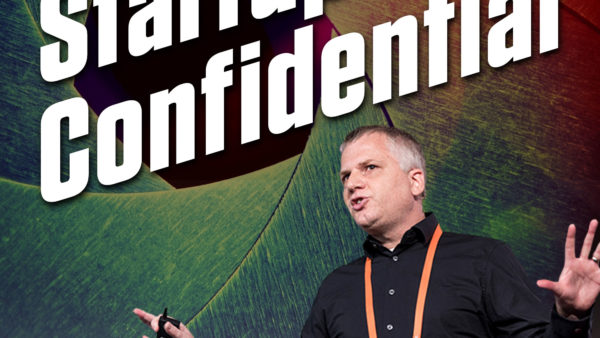PODCASTS / E75

Ep. 75 – Are These 6 Things in Your Strategic Plan?
AUGUST 1, 2022
You may have heard the phrase “strategic plan” before. I talk about it a lot. Not enough, though. A strategic plan is the front half of any good business plan, but it is the most poorly thought-out part of most business plans among CPG startups.
The ones I’ve looked at seem to be copied from an investor pitch deck, a document about the world you want investors to see sprinkled with carefully selected tidbits of reality.
Not good. But very common. Most Phase 1 and Phase 2 founders spend a ton of time pitching their business and its bright future.
Most of these “strategic plans” do not rest on a solid understanding of the brand’s fans.
Look, when you’re starting out you’re in pure experimentation mode. The ‘plan’ should be a hypothesis you’re willing to throw out once you’ve had a chance to measure consumer reaction.
On this episode, I want to get a little more didactic than usual. It’s 2023 planning season. You should already have a sense of your 2022 numbers, especially if you’re selling more than $5M in revenue.
I want to share my take on a strategic plan’s key components, including the exponential growth elements I discussed in my book.
Here goes!
- The strategy: a competitive theory of capturing $ from other categories with a specific consumer audience. In my book, Ramping Your Brand – I boil this down to using initial sales and research to isolate your high-value outcomes and the attribute-outcome signal tied to heavy usage among your fans. This becomes the behavioral basis of your business growth, anchored primarily in product and packaging design.
- Top-line revenue goals (should be realistic based on category case studies, broker data, and your degree of competitive advantage); if same-store sales growth is in the double-digits and is driving most of your growth, you may be a candidate for acceleration to exponential growth. Of course, you need to be ready to supply and to fund that kind of growth. It’s easier to ‘sell-in’ 100% growth, especially to new accounts, than it is to service them professionally.
- 4P Playbook – How you plan to pursue the strategy:
As I discuss in my book, the pyramid of causality in CPG begins with your product, including its packaging symbolism. This needs to be unbelievably memorable to minimize your need to pay for awareness. You need early fans to do your marketing for you through word-of-mouth, especially when you’re in Phase 1 (and can barely cover fixed operating costs)
-
-
- product line (the list of UPCs and their key competitively advantaged attributes)
- placement (i.e., sales plan by channel and relevant retail banners)
- promotion (trade and consumer promotional plan)
- pricing (pricing plan, including the role of discounting)
-
- Operational plan (how you plan to produce the required units)
- A detailed map of your supply chain and ALL of its costs, especially variable ones and those subject to market forces (like ingredient costs)
- unit production plan to provide excess units beyond target revenue goal
- COGS and gross profit per unit (to inform your budget)
- working capital to fund operations
- Budget for all the above (relying on maximum founder labor until you have outside investment) Some notes on budget management as you grow:
- It’s essential to keep your budget minimal in Phase 1 and Phase 2 so that your gross profits cover fixed operating costs (or do as soon as possible). You may raise money to cover Minimum Order Quantities initially, sure, but high fixed operating costs will drive you quickly out of business, including boutique salaries you can’t afford. This is the time to sweat like hell, even you have raised seed money. Save that for later (when you know what you’re doing). Look, as my friend Doug Raggio has said, you should start with $300-700K in seed money or don’t even bother in CPG. Credit card founders generally never make it out of the Death Funnel.
- Don’t spend dry powder until you know what will grow the business with added investment; have cash on hand to cover unforeseen issues in the supply chain but also to allow you to seize opportunities
- COGS and freight have risen a lot in the past year, it’s critical to have a solid, even pessimistic understanding of your gross margins, so you know how much cash you’re working with to support growth. Many early-stage brands have lost points of gross margin, so the playbook you’re investing in has to be smarter, based on small tests. This is especially true given that less money is available to founders than ever.
- Forecast financial impact of risks to any component of your plan (varies by category and competitive positioning) – The biggest annual risks in omnichannel CPG brands include:
- targeted retail accounts don’t take you on or that you have to walk away from a bad deal at said accounts
- gross margin loss to due to sudden COGS increase
- required funding doesn’t appear on desired timeline
- production ramp-up hits an obstacle you didn’t foresee
- major retail account roll-out doesn’t go as planned, leading to poor velocities
- new UPCs get delayed due to unforeseen quality issues
When you do this homework every year, your budget will shift to include cash on hand for emergency issues. This in turn will change how you think about fundraising, especially the timeline. The time to raise money is NOT when you need it to service a new account. And not to cover fixed operating costs that are way too high. OMG. Please. No. You should always be networking for cash and collecting it well before you need it. At least a year before you do.